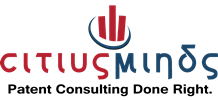In a highly competitive market, it becomes imperative for a company which is about to launch a product, to carry out an extensive FTO research on the patents to identify potentially threatening patents. It will not only help the company to avoid reworking on product functionalities and features but also avoid facing unexpected licensing costs.
At Citius Minds, in an FTO search, we dissect the product to identify every minute feature and then conduct the search to identify threatening active patents and publications. We map the product features against the claims of the identified patents to reflect potential infringement. In addition to this, we also conduct an extensive File-wrapper analysis to understand how the rejections and amendments impact the claim language.
Our detailed analysis helps the client to take an informed decision on whether they can move ahead with the launch or they need to work on tweaking the product functionalities.
“We were just about to launch our product. We had no idea someone had already patented it. Citius Minds helped us save millions that we would have wasted in pointless litigations.”
Head of Research & Development – A mobile manufacturing company
Challenge:
A mobile manufacturing company wanted to check possible threats of infringement for their new product to launch in the United States. The invention was related to a mobile phone having an aluminum housing, curved AMOLED touch sensitive display, locking mechanism to switch off the display screen, and a notification bar for checking the notification without unlocking the display screen at the back side of the housing. Citius Minds was engaged to perform an analysis of the product features, identify available active patents which claimed the features similar to the aforementioned product.
Execution:
The team thoroughly analyzed all the product features. A ‘Same-Page Document’ was shared with the client for sharing the team’s understanding of the important features of the product. This document included key features of the products based on team’s understanding, several representative term-sets and important US classifications, which could potentially be used in conducting the patent search. We used several paid and free patent databases to formulate exhaustive key strings using different term-sets to list the patents (filed only in the United States) similar to the disclosed product. The team then analyzed the list to shortlist the patents that claimed similar features as that of the client’s product.
One of the shortlisted patents also claimed a mobile phone having segmented AMOLED screen in which the bigger section was 10 times the smaller one. The smaller section was used to show notifications such as missed calls, new messages, etc. and the bigger screen was utilized for other smartphone features such as surfing the internet, playing games, chatting, etc. Another patent claimed several features of the product but did not disclose the aluminum housing and the notification screen at the back of the housing.
The team created a diagrammatic representation of the available and missing features in the identified patents as a part of a detailed report including ‘element-wise’ color-coded mapping of the product features with the relevant claim of the prior arts as well. Our team went a step further in guiding the client by suggesting them several features that may be added or parameterized to create a design around product.
Impact:
The client was able to showcase the similarities and differences between their product and the prior-art comprehensively using our diagrammatic representation, to the decision making team. The color-coded claim mapping helped his team to understand the relevancy of the identified patent references. They decided to tweak around with some of their features so as to prevent their product to infringe on any of the patents still active. The client used the millions, which would have been spent on a pointless patent infringement litigation suit, on research and development of their next generation tablet. We were engaged again to work closely with the R&D team from the beginning of product development lifecycle.
